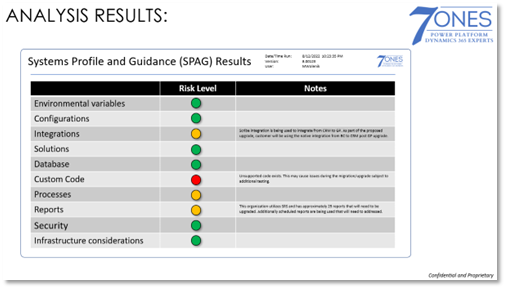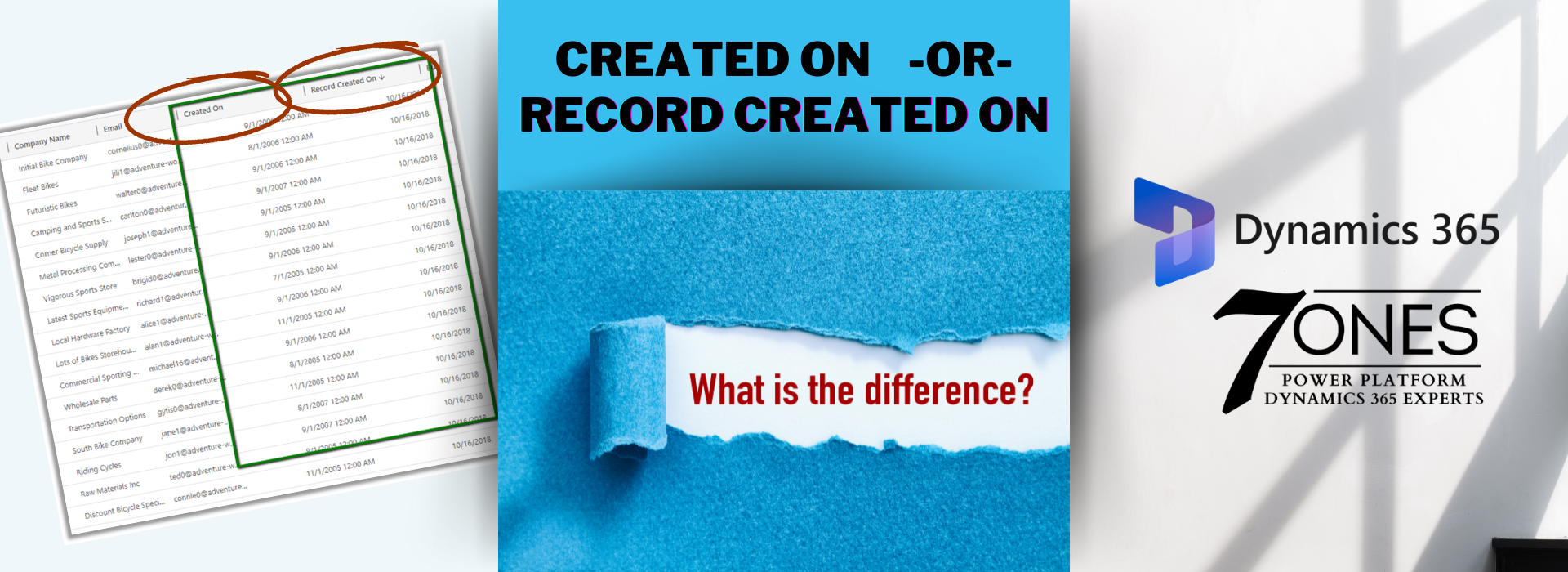
Why should you migrate to the Cloud?

When considering a cloud migration from on-premises for Microsoft Dynamics CRM, considerations such as continued product support, infrastructure overhead and new features are all factors to consider, however since Microsoft announced its cloud-first initiative, organizations are incentivized to move to the cloud for the following reasons:
- Higher data security
- Disaster recovery options
- Cost savings
- New features
- Increased scalability
- Moving cost allocation from CapEx to OpEx
- Greater agility with faster time to market and increased stack options
- Higher service quality
- New features available
- Greater efficiency
- Modern application architecture
Of course, there is no greater initiative then a specific organizational requirement which might include some/all these points, but factors specific to the organization.
This blog will examine at a high level some of the most important factors, but there may be others that have higher importance then what’s listed here.
Dynamics CRM Support Ending
In March 2022, Microsoft announced that it was extending mainstream support for Dynamics 365 on-premise (the announcement can be found here) from January 2025 to January 2027 and extended support was extended from January 2026 to January 2029.
What this means is that customers running Dynamics CRM 2016 on their own computers in-house or via a hosted provider including Azure (i.e., ‘on-premises’), can get continued support in the form of trouble-tickets, bug fixes and problem resolutions direct from Microsoft through these time frames.
What is the difference between Mainstream and Extended support?
Mainstream support for Microsoft products includes the following:
-
- New product feature design and features
- Security and non-security updates
Extended support includes the following:
-
- Security updates ONLY
Both mainstream and extended support options include self-help support in the form of Microsoft online Knowledge Base articles and of course community resources and paid support from Microsoft. For more information about the Lifecycle phases from Microsoft, click here.
Having support available should put some customers at ease with regard to their existing deployments, but what about other considerations related to running Dynamics on-premises? The following are common challenges presented in these scenarios:
- New features are unavailable. In fact, Microsoft’s major investments in the Dynamic D365 CRM product are limited to the online version only these days and they are incredibly compelling.
- The supporting infrastructure may need to be maintained. This includes the Operating System and the SQL Server database.
- The demand/desire for running applications in-house has greatly decreased. There are exceptions to this such as Government and Financial Services organizations, but even these have seen increased cloud adoption with things like the Dynamics 365 Government Cloud and addressing PII and GDPR information.
Dynamics CRM Cloud Migration Strategies
With the many migrations that we’ve performed for organizations large and small moving from on-premises to the cloud, migration options generally fall into one of these categories:
-
Lift and Shift
Known also as rehosting, this strategy is used when cost and expediency are paramount as there is little to no redesign of the application and everything (data, application, etc.) is just moved to the cloud. Typically, the only effort expended is to ensure functionality has parity post-migration and new cloud constructs are addressed (user access, permissions, backups, etc.).
When migrating Microsoft Dynamics D365 under this strategy, there are usually challenges as the on-premises software has both deprecated features that don’t exist in the cloud version and there are abundant new features that users can benefit from *.
* Note – Specific to Microsoft Dynamics D365 CRM migrations when Lift and Shift is deployed, we have a specific strategy that users can benefit from that improves initial adoption and allows for growth. The approach leverages a common acronym known as CWR (Crawl, Walk, Run) whereby we REMOVE new features to achieve a near parity with the older on-premises version of the software, and then add it back in as the organization grows with the application and the new features. -
Rearchitect
- With this approach, the target environment (Microsoft Dynamics D365 Online) is evaluated along with the existing on-premises deployment and a number of artifacts are created consisting of the following:
- An Envisioning Session reviewing at a high-level the features of the new platform and any challenges related to the old platform. This is typically performed as a fixed-price engagement known as ‘Workshopping’ and there is a structure approach to it (depending on the system features and usage, these typically take about a day including the documentation (1/2 day to workshop and then additional time to prepare the documentation), however some workshops can take up to 2 weeks depending on the organizations desire to go-deep into planned usage of the new environment.
- A Fit-Gap analysis of features.
- Use a Systems Profile and Guidance (SPAG) Tool - A technical analysis related to the migration effort in terms of compatibility, upgrade options and Level of Effort (LOE) for each task. This is done via proprietary 7Ones toolset at little/no cost to send customers and sends back the telemetry necessary to build the priority list and identify any major hurdles and work arounds before work has started.
* The Systems Profile and Guidance (SPAG) Tool documentation output is outlined further in this blog post.
The end result of all of this is to create a migration assessment that shows the high-level migration plan which includes time, effort, and resources necessary to migration a Microsoft Dynamics CRM on-premises deployment to Microsoft D365 Online.
- With this approach, the target environment (Microsoft Dynamics D365 Online) is evaluated along with the existing on-premises deployment and a number of artifacts are created consisting of the following:
-
Hybrid
Combining both concepts related to Lift and Shift as well as Rearchitect, and leveraging the output from our SPAG analysis, we can typically recommend a hybrid approach that leverages higher priority, lower cost items with a quicker time to value for end users.
A common scenario in this model is the idea that we need to have sales selling – which means prioritizing lead management and opportunity creation. As a result, we might discuss whether or not we can move forward with a base data migration and then just do a Lift and Shift for things like Cases (Customer Service) with an acknowledgement that it will need to be done, but not immediately, instead focusing on sales enablement – i.e., adding new functionality around automation, business processes, alerting, etc.
Avoiding Technical Debt
In all the scenarios described, avoiding or minimizing Technical Debt should be a priority.
Technical Debt Defined
Technical Debt is the idea whereby prioritization is given to something at the expense of something else – thereby creating an obligation (or debt) to have to come back later and refactor.
An example of this using the scenario above whereby we prioritize sales over customer service is expending effort moving a known antiquated process to allow customer to function, knowing that there is a need or desire to update it (in this case we’ll burn hours ensuring the migration provides parity which would otherwise have gone into refactoring – hence creating a debt that needs to be backfilled at a later date/time).
To avoid Technical Debt, we almost always recommend using our SPAG tool to identify and prioritize areas that need mitigation and leverage the Fit Gap analysis to create a baseline. It is through these that we’re able to minimize Technical Debt.
Systems Profile and Guidance (SPAG) Tool
Every organization contemplating a Microsoft Dynamics D365 CRM migration to the cloud should consider the usage of a SPAG tool as it is critical in providing a migration assessment (when working with a Microsoft Partner, be sure to ask them about whether or not they have one and if not, why not).
The SPAG is broken down into the following key areas:
- Results of the analysis
- Inclusion of all major areas, including:
- Environmental variables
- Configurations
- Integrations
- Solutions
- Database
- Custom Code
- Processes
- Reports
- Security
- Infrastructure considerations
- Results Summary
- Migration Process Recommendations
- Level of Effort including timeframe, budget, and necessary resources
It is important to note that the tool provides recommendations, but the real value comes from an iterative discussion about priorities. Some items MUST be addressed, while others can be deferred if not important or used by the organization. Some things, such as Dialogs for example are not easily replaceable/upgradable and require effort so should be given thought as to the ROI and TTV.
Common deprecations:
-
- Knowledge Base has been replaced with Knowledge Articles
- Dialogs are deprecated
- Contracts have been replaced with Entitlements
- The on-premises Email Router is not a cloud supported technology while Server-Side Synchronization is
- Custom code, including Silverlight usage is common high-risk/high-effort culprit. Additionally, there is no Sandbox or Isolation mode for plug-ins with D365 online.
- Reports that access SQL directly need to be updated to FetchXML
Systems Profile and Guidance (SPAG) Output:

Example of SPAG Results
Migration Process
The migration process for moving from on-premises to the cloud with Microsoft Dynamics CRM to D365 consists of several critical steps that ensure a high level of success, while lowering risk and cost to the end customer.
These steps are:

- Envisioning
- Prioritizing
- Technical
- Backup/Test/Remediate
- Cut-Over/Go-Live
- Educate
- Support
Each of these seven steps is prescriptive and while any of them can be done by an organization, there are definitely reasons to consider using a partner to help with the process such as 7Ones to help with it.
7Ones is an approved Microsoft Dynamics Services Partner and our close partnership with Microsoft allows us to quickly trouble-shoot and resolve issues before they come up and we often work hand-in-hand with Microsoft during the migration process to deliver high quality results and lower risk factors.
7 Step Migration Process
- Envisioning
With our workshop approach, we’re able to quickly ascertain and develop key requirements to develop the approach based on priorities. This high-impact requirements gathering is often an accelerated process that allows us to mutually set the end-goals before any significant effort is made ensuring success before we even start.
Workshops can be as short as 2 hours but are typically based on the complexity of the existing state and desired future state. Additional factors include new features that we might even include in the workshop to see if there is a fit based on dynamic requirements. - Prioritizing
With this step, we mutually agree on the priorities based on the Time-Money-Quality relationship to ensure that the migration isn’t done in isolation and allow a recommendation that includes all factors.
Often, we can deprecate older (and burdensome to maintain) features in favor of new ones with the only expenditure being on training. This results in a higher Time-To-Value (TTV) and sets the organization up for success with a phased approach. - Technical
Benefit from our technical experience and background with the many migrations we’ve done as well as having the highest level of technical resources available. These resources include:
- Former Microsoft product specialists
- Microsoft Most Valuable Professionals (MVP’s)
- Technically advanced and Microsoft certified individuals
- Well respected industry and product experts
- Backup/Test/Remediate
A key step, with this we will perform the steps necessary to ensure that no data is lost and develop a back-up strategy that guarantees options in the event of a failure at any point in the process. - Cut-Over/Go-Live
During the cut-over/go-live step, we setup a process known as Hyper-Care that places key resources on-demand for immediate support. This often is a 7-day window but can be shortened (or expanded) depending on the complexity of the migration and support process. - Educate
While the Educate step is listed as step 6, it starts in step 1 (envisioning) and is an ongoing process that attempts to provide continuing knowledge of the product, usage, and options around the platform. - Support
Having a support plan in place with a team of individuals that have ‘seen it before’ and can quickly resolve or elevate specific issues to Microsoft, and when necessary, will guarantee success for a cloud migration.
Learn More
7Ones professionals balance the traditional TIME-MONEY-QUALITY equation, never sacrificing a quality result.
We know you need to get up and running quickly without taking a step backward. We identify your goals and objectives to keep moving forward. We know the system so thoroughly that there is no need to start at square one.
Contact us today to schedule your Microsoft Dynamics 365 CRM online migration, or for a no-cost discussion to learn more about how we can help! 7Ones can help your business grow! https://www.7ones.com (213) 459-5858
Want to know how to optimize Microsoft Dynamics 365 CRM for your business?

‘Record Created On’ vs ‘Created On’ date fields??

Microsoft Field Service and Microsoft Project Operations. Two similar solutions, or are they?

Mastering Dynamics 365 Sales User Adoption: Empowering Your Sales Team for Success

Dynamics CRM Migration from On Premise to the Cloud

Setting up Users in Dynamics 365 Sales
The Sales Process in Dynamics 365 Sales

Top 7 Dynamics 365 Customer Success Strategies
